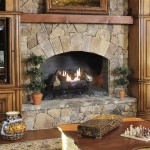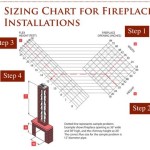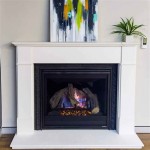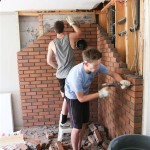Fireplace Vent on Side of House: Considerations and Installation
A fireplace vent on the side of a house is a common sight, especially in homes with traditional fireplaces. While it may seem straightforward, there are specific considerations and factors that influence the placement and design of a side-mounted vent. Properly installing a vent is crucial for ensuring efficient airflow, preventing safety hazards, and maintaining the aesthetic appeal of your home. This article will explore the key considerations and steps involved in installing a fireplace vent on the side of a house.
1. Building Codes and Regulations
Before embarking on any fireplace vent installation, it's vital to check with your local building codes and regulations. These guidelines specify the minimum requirements for vent size, materials, and installation techniques. They may also dictate the allowable distance between the vent and nearby combustibles, such as siding, roof overhangs, or windows. Violations of these codes can result in fines or even the need to re-do the installation.
For instance, some codes might mandate a minimum clearance of 18 inches between the vent outlet and combustible materials. Others might specify the required venting material, such as double-walled stainless steel or clay tile. Consulting with a qualified building inspector or licensed contractor is highly recommended to ensure compliance and avoid potential issues.
2. Vent Placement and Design
Proper placement of the fireplace vent plays a crucial role in its effectiveness and safety. Here are some key factors to consider:
A. Proximity to Combustibles: As mentioned earlier, the vent outlet must maintain the required clearance from any flammable materials. This avoids the risk of fire hazards caused by excessive heat. B. Wind Exposure: The vent should be positioned to minimize wind exposure. Strong winds can create backdraft issues, hindering the proper flow of combustion products. A location protected from prevailing winds or with a wind baffle is preferable. C. Aesthetic Considerations: While functionality is paramount, aesthetics should also be considered. The vent should blend with the overall design of the house and not detract from the curb appeal. Options include concealed vents, decorative coverings, or matching the exterior cladding. D. Vent Length and Size: The length and size of the vent depend on the size of the fireplace and the distance to the exterior wall. Shorter vents generally require larger diameters to maintain adequate airflow. Consult with a professional to determine the appropriate sizing and configuration for your specific needs.
3. Installation Process
The process of installing a fireplace vent on the side of a house typically involves the following steps:
A. Preparation: This step involves obtaining the necessary materials, including the vent pipe, flashing, and any insulation or sealant. It also involves marking the location for the vent outlet on the exterior wall. B. Cutting and Framing: This involves cutting an opening in the wall to accommodate the vent pipe. Framing may be required to support the vent and ensure proper alignment. C. Installation of the Vent Pipe: The vent pipe is then inserted through the opening and connected to the fireplace's flue. The pipe should be securely attached to the wall using brackets or clamps. D. Flashing and Sealing: Flashing is installed around the vent outlet to prevent water intrusion. Sealants are applied to ensure a watertight fit and prevent leaks. E. Exterior Finish: The vent outlet can be finished with a decorative cover or blended with the surrounding siding for a seamless look. F. Inspection and Verification: A final inspection is essential to ensure all connections are secure, the venting system is functioning properly, and code requirements are met.
While the installation process may seem straightforward, it is crucial to note that it involves working at heights and handling potentially hazardous materials. Therefore, seeking assistance from a qualified professional is strongly recommended to ensure a safe and efficient installation.
Gas Fireplace Venting Explained Heatilator
Gas Fireplace Venting Explained Heat Glo

Wall Mounted Gas Fireplace Vent Inspecting Hvac Systems Internachi Forum
Gas Fireplace Venting Explained Heat Glo

Benefits Of Direct Vent Fireplaces
Direct Vent Fireplace Is Melting Our Siding And Soffit Would Love Your Advice Hearth Com Forums Home

Wall Mounted Gas Fireplace Vent Inspecting Hvac Systems Internachi Forum

Pin On Quick Saves

What Are The Best Ways To Vent A Gas Fireplace Zoroast

Fireplace Cover To Keep Cold Air Out
Related Posts








